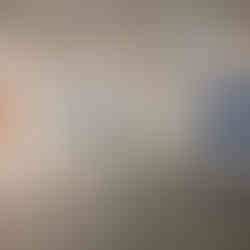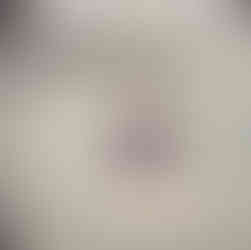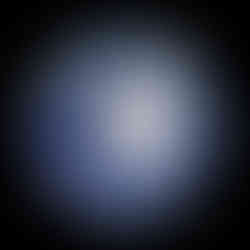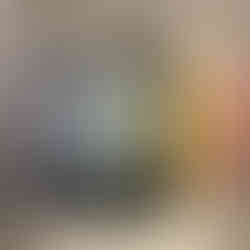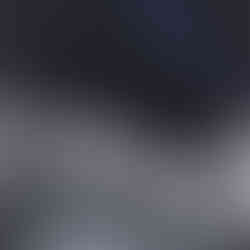
Penelope Umbrico. Stargazers: Intersections of Contemporary Art & Astronomy, Orange Coast College, Frank M. Doyle Arts Pavilion; Images courtesy of the gallery
Stargazers: Intersections of Contemporary Art & Astronomy
through April 6 Frank M. Doyle Arts Pavilion, Orange Coast College, Costa Mesa
By Liz Goldner If looking at the heavens at night and at the origins of the universe are palliatives for today’s troubled times, this exhibition will soothe our anxious souls.
This art meets science exhibition is inspired by Orange Coast College’s new planetarium, and comprised of drawings, paintings, sculpture, assemblage, photography and computer generated images. The show alludes to the international movement, combining art with science and technology—prevalent in studios, universities and journals.
The largest installation in the show is Russell Crotty and Laura Guenther’s, Look Back in Time. The title refers to light that has traveled from the depths of space, to eventually reach our telescopes. Walking through this gallery-size art piece is to experience an immersive display of colorful hanging panels, mesh netting, tinted bio-resin, matte medium, ballpoint pen on paper, graphite, colored pencil, microbeads, metallic glitter, thread, fabric and wooden dowels. The installation, tracing the evolution of our universe over an indefinable amount of time, is the result of Crotty’s collaborations with the UC Santa Cruz Institute for Arts & Sciences, the Lick Observatory Historical Collections Project, and the San Jose Institute of Contemporary Art.
Victor Raphael and Clayton Spada’s “From Zero to Infinity” series is comprised of pigmented inkjet prints, combining abstraction with realism, and created with computer generated images and paint. The artists’ intention is to explore human culture as it relates to the cosmos, over an interminable amount of time. The 75-inch high Eclipse (2015-2018) depicts a blue shrouded solar eclipse above a barren and slightly sinister landscape. The 72-inch wide Entropy is more obscure, illustrating, via seemingly exploding images in yellows and greens, the declining inner workings of our universe.
South Pole Activation and North Pole Activation (both 2014) by Lita Albuquerque are large pigment prints, featuring blue orbs with abstract features, suggesting visions from outer space. The meditative prints that evoke the majesty of our universe are interpretations of the artist’s Stellar Axis project; in which she placed large blue orbs (actually balls) against the South Pole’s snow-white landscape.
Lia Halloran’s horizontal Triangulum, After Adelaide Ames (2017) and vertical The Great Comet, after Annie Jump Cannon (II) (2016) are Cyanotype on paper prints from her “Your Body is a Space That Sees” series. These artworks are based on the late 19th and early 20th century cataloguing and illustrating of craters, comets, galaxies and nebula, all of which were completed by female astronomers. Wall didactics explain: “The cyanotype process mimics early astronomical glass plates moving between transparent surfaces to a photograph without the use of a camera.”
The scintillating photomontages, Suns from Sunsets from Flickr (2016), are amalgams of appropriated photographs of sunsets from the Internet. As the artist Penelope Umbrico discovered, photos of sunsets are the most ubiquitous images on the web, implying that sunsets are the most photographed scenes worldwide. The significance of this practice is that taking pictures of sunsets can be a collective experience, even without the photographers’ awareness.
Carol Saindon’s installation Outside of Inside is a floor composition representing a binary star system. Its intention is to explore the figurative and geophysical relationship to the cosmos. One artwork in this series rotates in a clockwise direction, with the other one rotating counter-clockwise, while tiny pieces of shattered glass on the floor mimic distant stars.
The United Catalysts display is more conceptual than visual. Kim Garrison and Steve Radosevich have been working on their “Skywheel Project” for more than a decade, collecting prayers from people all over the world. Their hope is that disseminating these prayers will help to save the Earth, protect our planet and promote harmony among all people. Garrison and Radosevich plan to house these prayers in their “Skywheel satellite,” which will orbit the Earth to spread the positive messages everywhere.
The most ethereal installation in “Stargazers” is George Legrady’s Stardust 3D, composed of yellow and green abstract prints that appear like exploding stars. This lenticular-print series is derived from NASA’s Spitzer Space Telescope, which captures images of comets to galaxies billions of light-years away.
A broad view of the multi-faced “Stargazers” suggests that it would be helpful if thematic threads are woven into the didactics, so that viewers, when confronted with several perplexing pieces, would have pathways to follow as they went from one artwork to the next. This addition might enable viewers to reflect more clearly on the show’s theme of space, time, and the human condition within and beyond the observable universe.
Frank M. Doyle Arts Pavilion, Orange Coast College 2701 Fairview Road, Costa Mesa, CA 92626
#losangeles #california #losangelesartist #LizGoldner #art #painting #VictorRaphael #shoeboxpr #CarolSaindon #laverne #losangelesart #contemporaryart #PenelopeUmbrico #southerncalifornia #orangecoastcollege #GeorgeLEgrady #abstract #collage #LitaAlbuquerque #CostaMesa #artgallery #artinterview #RussellCrotty #FrankMDoyleArtsPavilion #gallery #museum #artandcake #LiaHalloran #artexhibition #installation #fineart #artist #soloshow #mixedmedia #arts #artreview #KimGarrison #artmagazine #SteveRadosevich #ArtandCulture #exhibition #LauraGuenther #exhibit #ClaytonSpada

